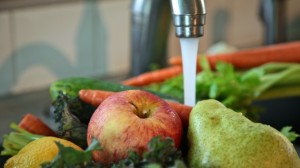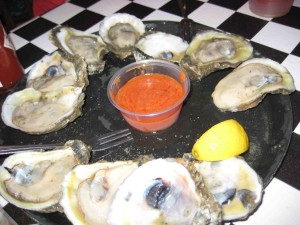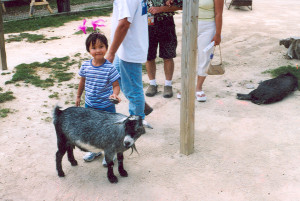My friend, Matt Shipman, a science writer and public information officer at North Carolina State University writes in the below Quest North Carolina post about washing food (reprinted with permission):
 Everybody eats, and no one wants to eat something that could make you sick. But there’s a lot of misinformation out there about how and whether you should wash your food.
Everybody eats, and no one wants to eat something that could make you sick. But there’s a lot of misinformation out there about how and whether you should wash your food.
Food safety is an important issue. The U.S. Centers for Disease Control and Prevention estimates that each year one in six people in the United States will get sick because of food-borne illness. And risks can be increased or decreased at every point between the farm and your fork. Yes, you want to make sure to cook your food to the appropriate temperature, but here are some other tips to help you make good decisions in the kitchen.
1. Don’t Wash Meat
Some people think that you’re supposed to wash chicken, turkey, or other meats before cooking. Those people are wrong. “Research shows that washing meat can spread dangerous bacteria around your kitchen or food preparation area,” said Ben Chapman, a food safety researcher at North Carolina State University. “And washing poultry under running water can spray surface contamination up to three feet away. We cook meat to make it safer; washing meat can only make a meal riskier.”
2. Washing Fruits and Veggies Only Removes up to 99 Percent of Pathogens
“That seems good, but it’s not great,” Chapman said. By comparison, cooking food can cut the number of bacteria or other microbial pathogens by 99.9999 percent. And that 0.9999 percent difference can be important. If a food is contaminated by thousands of microbes, washing off 99 percent means that dozens will be left behind — and that’s enough to make you sick. That is why people who are immunocompromised, such as some chemotherapy patients, are often discouraged from eating raw fruits and vegetables.
3. Don’t Use Soap
“Although washing has its limitations, vigorously rinsing produce under running water is the most effective way to remove the microbes that cause foodborne illnesses,” Chapman said. You don’t need to use soap or special cleaning solutions. In fact, using soap can actually introduce additional risk, because soaps may contain chemicals that aren’t intended for human consumption.
4. You Can’t Get All the Pesticides Off Your Food (but Don’t Panic)
Some minute traces of pesticide will probably be on — or in — your fruits or vegetables when you eat them. “But being able to detect a pesticide doesn’t mean that it’s a public health problem,” said Chris Gunter, a researcher at NC State who studies vegetable agriculture. That’s because, after using a pesticide, farmers are required to wait for a specific period of time before harvesting (it’s called a “pre-harvest interval”). During that time, the pesticide breaks down or washes off, meaning any residual pesticide meets EPA’s human health requirements.
5. Even Organic Food Can Use a Rinse
Just because produce is labeled “organic” doesn’t mean that it’s somehow immune to microbial contamination. Organic farmers usually grow their fruits and vegetables in open fields, just like conventional farmers, and are subject to some of the same risks, such as fecal contamination from wildlife (that is, poop can still get on the food).
“Any time you’re going to eat fresh produce you should rinse it off, if for no other reason than to rinse off dirt,” said Don Schaffner, a food safety researcher at Rutgers. “And rinsing off produce may offer some risk reduction in terms of microbial pathogens.”
Bonus: Don’t Wash Pre-Washed Veggies
If you’ve bought salad mix that is labeled as “pre-washed,” you really don’t need to wash it again, Schaffner said. In fact, you probably shouldn’t wash it again. “An expert panel reported in 2007 that consumers who wash these salads again won’t reduce the risk,” Schaffner said, “and may actually create a risk of cross-contamination” where pathogens from other foods get onto the salad. In this case, being lazy is a virtue.









